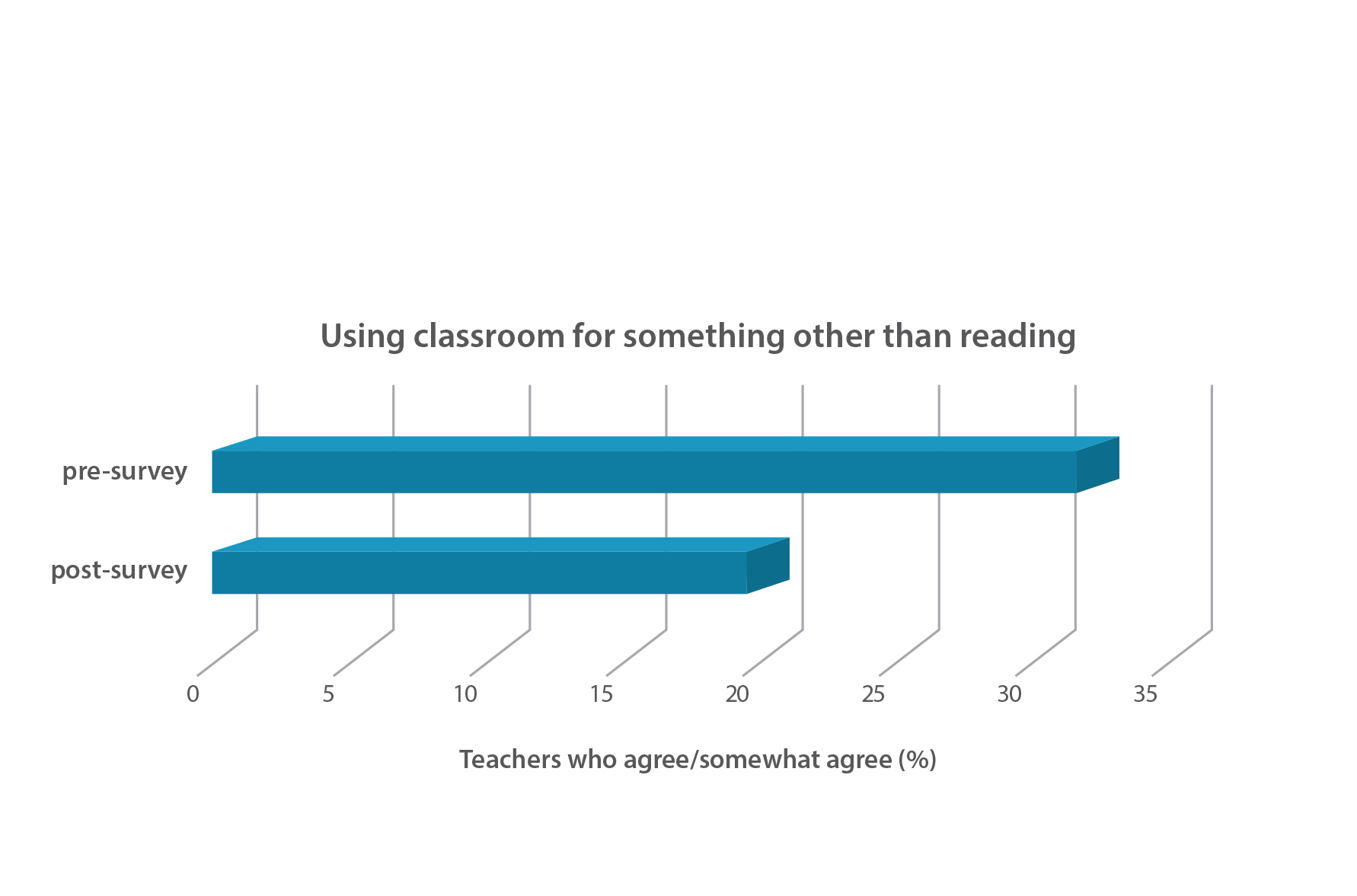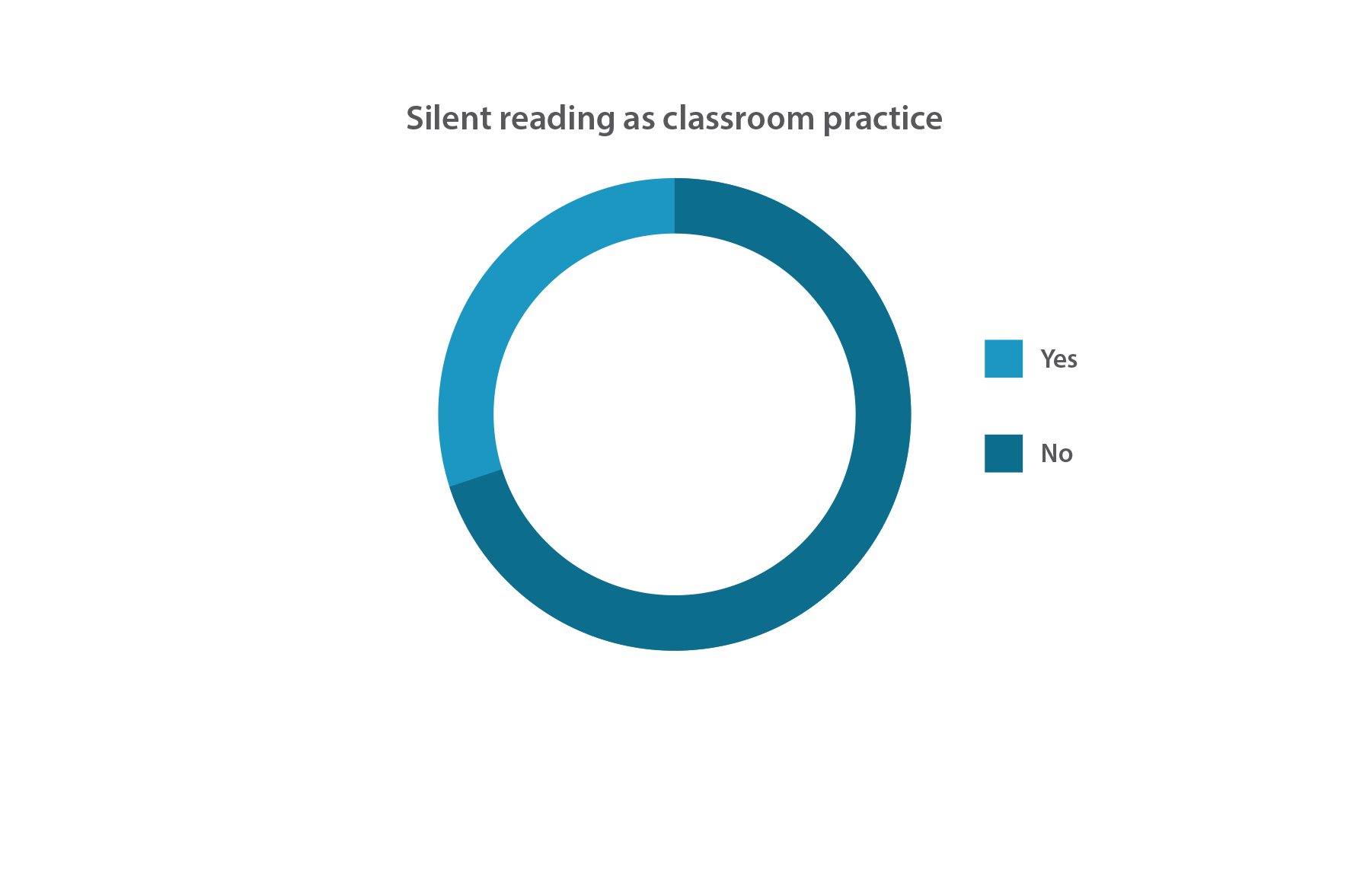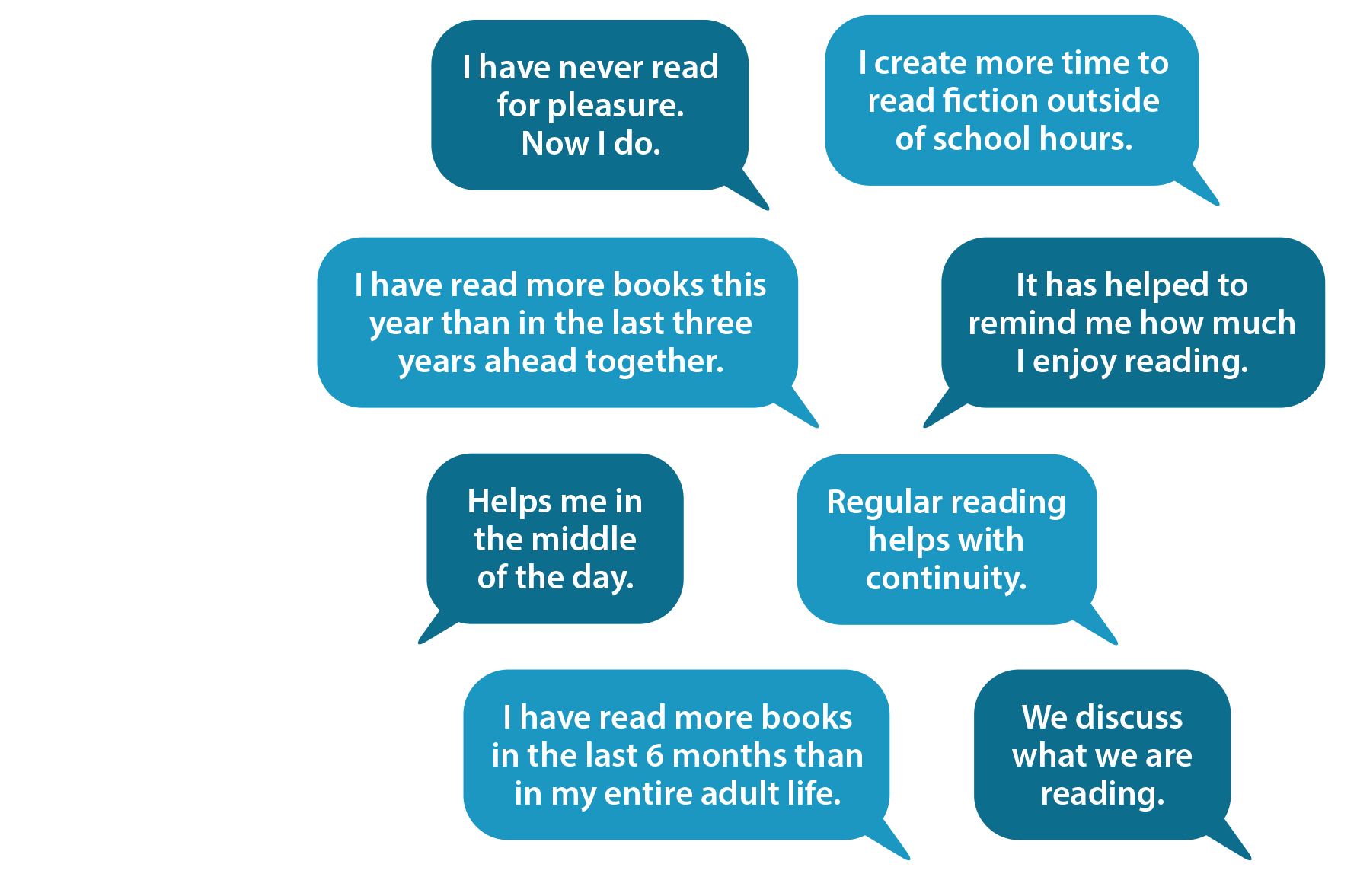Issue 120
Term 1 2022
Embracing change
In 2020, Queenwood school for girls in Sydney implemented a sustained silent reading (SSR) program.
This article is a follow-up to their initial article on this program (Connections Issue 117), where we check in on the benefits that this program has had for the school.
The unexpected benefits of ‘being on the bus’
In January 2020, Queenwood implemented ‘Just Read’, a daily sustained silent reading program for all K–12 students and staff. The aims of the program were to increase student motivation to read and to improve student literacy outcomes. While investigating these changes, we also measured staff attitudinal changes to Just Read. This article focuses on the unexpected benefits for our staff after 2 years of the program.
As part of this project, all Queenwood staff were invited to respond anonymously to Just Read pre-introduction and postintroduction surveys to collect data on a number of aspects relating to the program.
Teachers’ changing attitudes to Just Read
Teacher modelling is a crucial component for the success of a silent sustained reading program for students. Due to the immense time pressures in an already crowded curriculum, we anticipated that not all teachers at the start of the Just Read program would recognise its benefits. This was proven to be correct.
Pre-program and post-program teacher surveys
Pre-program question: If I had the choice, I would rather use class time for learning opportunities other than silent reading. Of teachers who responded to the pre-program survey, 31.6% Agreed or Somewhat Agreed to this statement.
In the post-program survey held after a year of implementation of Just Read, this figure was reduced to only 19.4%. These data show that the majority of teachers initially had a positive attitude to introducing Just Read. Of the teachers who did have early reservations about the program, a number changed their viewpoint after observing the benefits for their students.

Figure 1. Question 1 pre-and post-program teacher survey results
Teacher-identified problems before the program’s introduction
- ‘Reading as a habit should be instilled in the Junior School, forcing teenagers to read may put them off.’
- ‘Silent Reading could be done at home with modelling by parents.’
Teacher-identified benefits after the program’s introduction
- ‘It gives the girls a clear understanding of the importance of reading.’
- ‘Class learning should be a priority and then the silent reading, a close second.’
Just Read as a classroom practice
The majority of our teachers have previously experienced sustained silent reading programs, as these are common in many educational settings. Such programs often take the form of DEAR (Drop Everything and Read) or an English-based Wide Reading program. The Just Read program has become embedded at Queenwood as classroom practice. It differs from other reading programs as it is a whole-school initiative, is timetabled to fall across a full range of subjects, involves daily practice, and uses only works of fiction that are self-selected. Another key point of difference is the inclusion of student-led book talks to promote peer discussion, a critical component of developing a reading culture in our school.
Teacher survey questions and responses
This section documents teacher understanding of the practice one year after program implementation.
Question: Has your understanding of silent reading as a classroom practice changed since the beginning of the project? After one year of the program, 30% of staff respondents said Yes, and for a wide range of reasons, as shown below.

Figure 2. Answers to whether teacher's attitudes to silent reading as a classroom practice had shifted since the beginning of the project.
Answers:
- ‘My understanding and awareness of the importance of modelling sustained silent reading to the students has increased.’
- ‘The role of story for enjoyment and connection.’
- ‘I see greater value in it.’
- ‘I was unsure how it would work with our younger students, who are not yet reading independently, but it has worked well.’
- ‘I have seen more interest in books from my students.’
- ‘My students are instantly calmer and display a relaxed and positive mindset.’
- ‘We all look forward to our Just Read time in the mornings.’
- ‘I really enjoy the chance to read and I think the girls like to see us teachers reading for pleasure as there is a snowball effect.’
- ‘I did not anticipate the high level of engagement.’
- ‘There is a culture of reading at the school that did not exist before.’
- ‘It is a good way for the students to unwind and get focused and it has been wonderful to see their new passion for reading.’
Reading for enjoyment
Statement: I enjoy reading my own books during silent reading time at school.
After a year of the Just Read program, over 89% of staff said that they strongly agree or agreed.
Question: Has your personal level of enjoyment of independent reading of books changed since the beginning of the project?
After a year of the program, 97% of staff respondents stated that there had been no change or a positive change. There were four key identifiers that indicated increased personal level of enjoyment or motivation to read:
- greater continuity and motivation to read due to reading more regularly (45%)
- reading more outside the classroom (37%)
- improved wellbeing (9%)
- greater connections with students (7%).

Image 1. Teachers thoughts on the silent reading program.
Further benefits for teaching staff
While the benefits for students undertaking a sustained silent reading program have been clearly evident, a number of staff benefits have also become apparent, a fantastic but unexpected outcome. Teaching is an incredibly busy, highpressure environment with a seemingly limitless workload. The introduction of a daily silent reading program was seen as a gift by the vast majority of teachers, as it allowed a pause on formal teaching and learning while they immersed themselves in a book of their own choosing. A significant number of our staff have reignited their passion for reading. Others have read fiction books for the first time ever and have maintained this habit. Staff have identified reading as assisting with their wellbeing or in making connections with students. It is now very common in our school to overhear staff passionately sharing their latest read with their peers.
Support from our librarians has been integral to developing this strong culture of reading, as our teacher librarians continue to offer an endless reader advisory service, matching staff and students to their next great read.
In a project of this magnitude there have been both expected and unexpected challenges along the way, not least a worldwide pandemic. There has been reluctance among some staff, one of the many roadblocks that we have had to overcome. But the evidence clearly indicates our success in developing a reading culture in our school, for both staff and students. It confirms our vision for the program.
If you would like any more information about this project, please contact Gabrielle Mace at [email protected].

